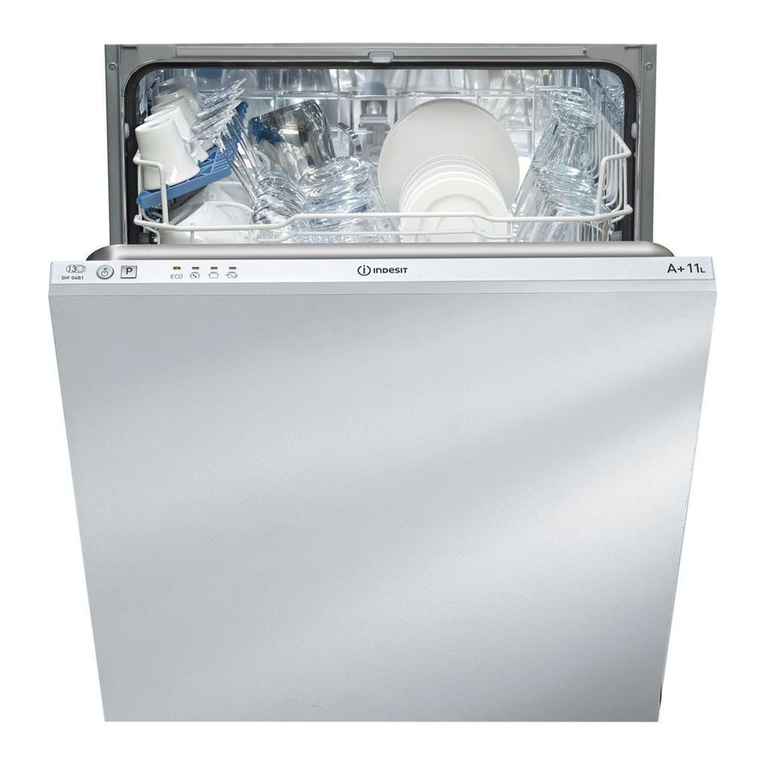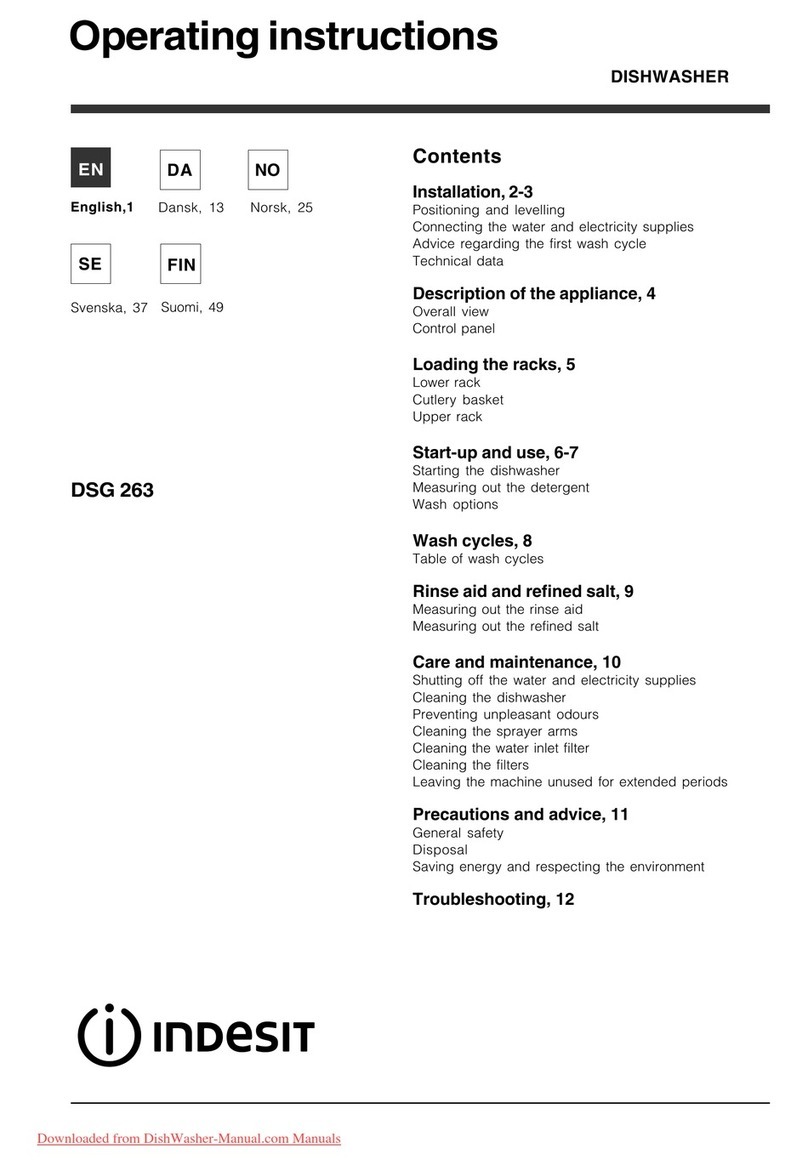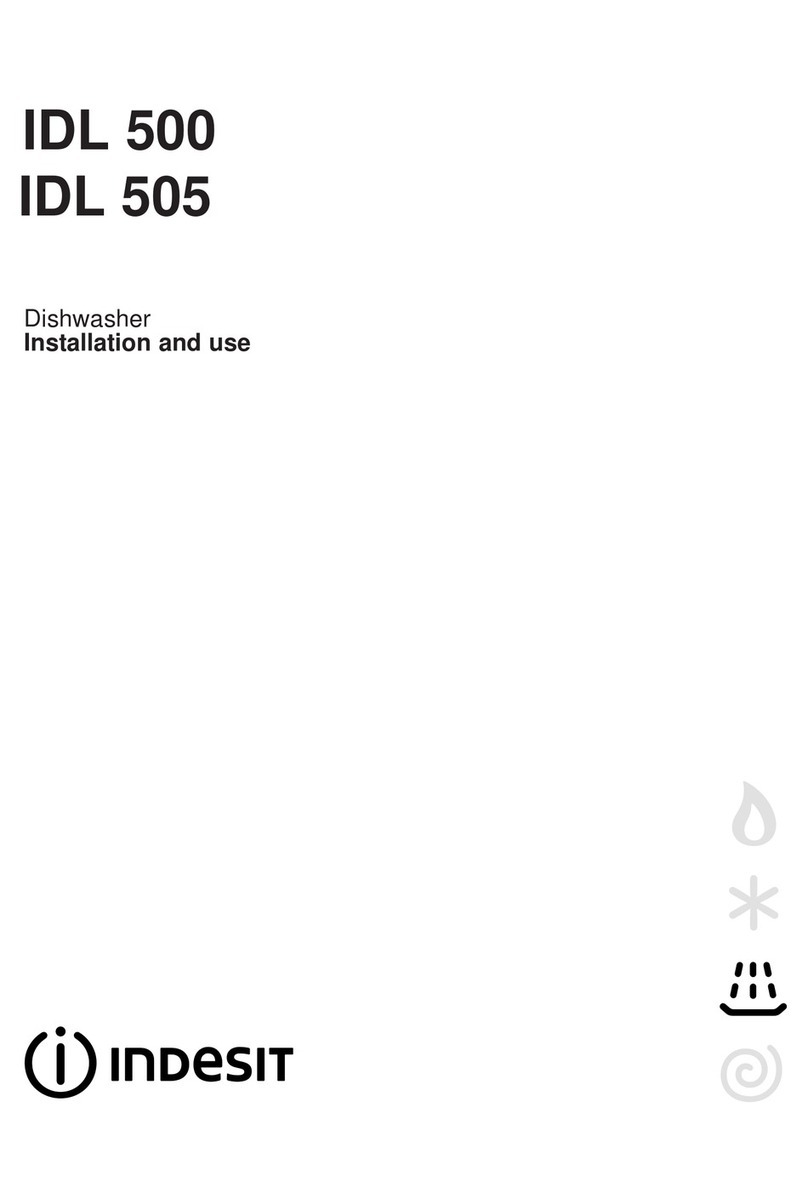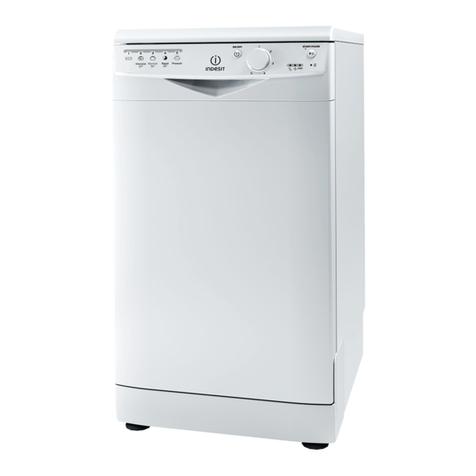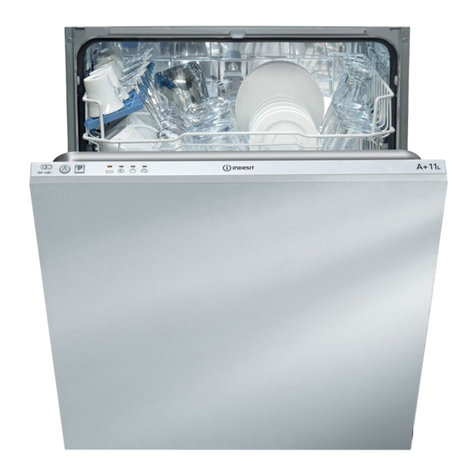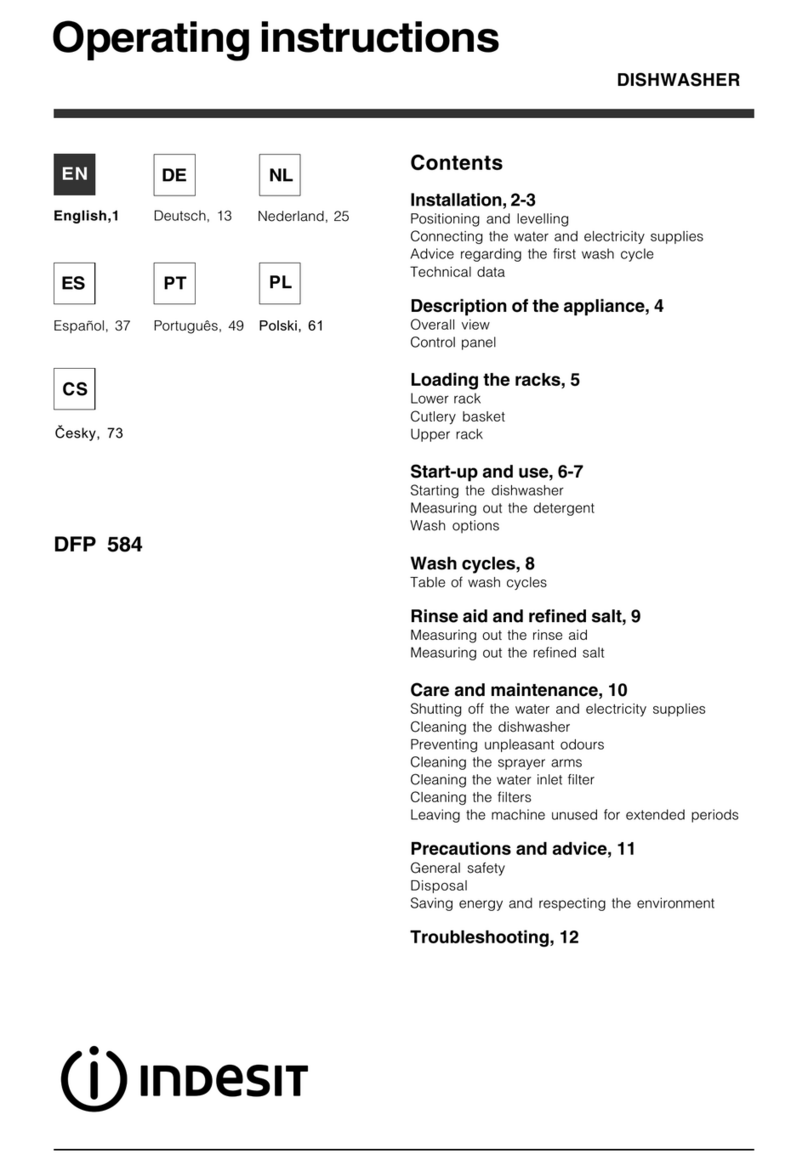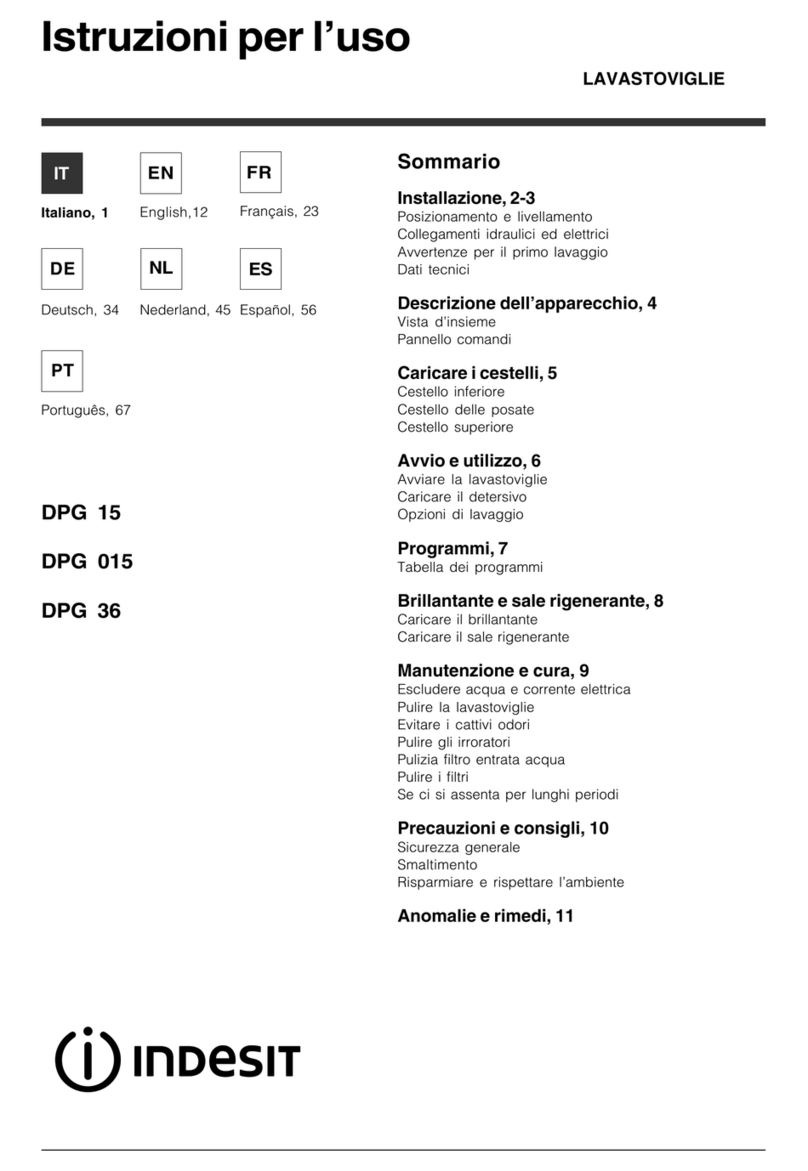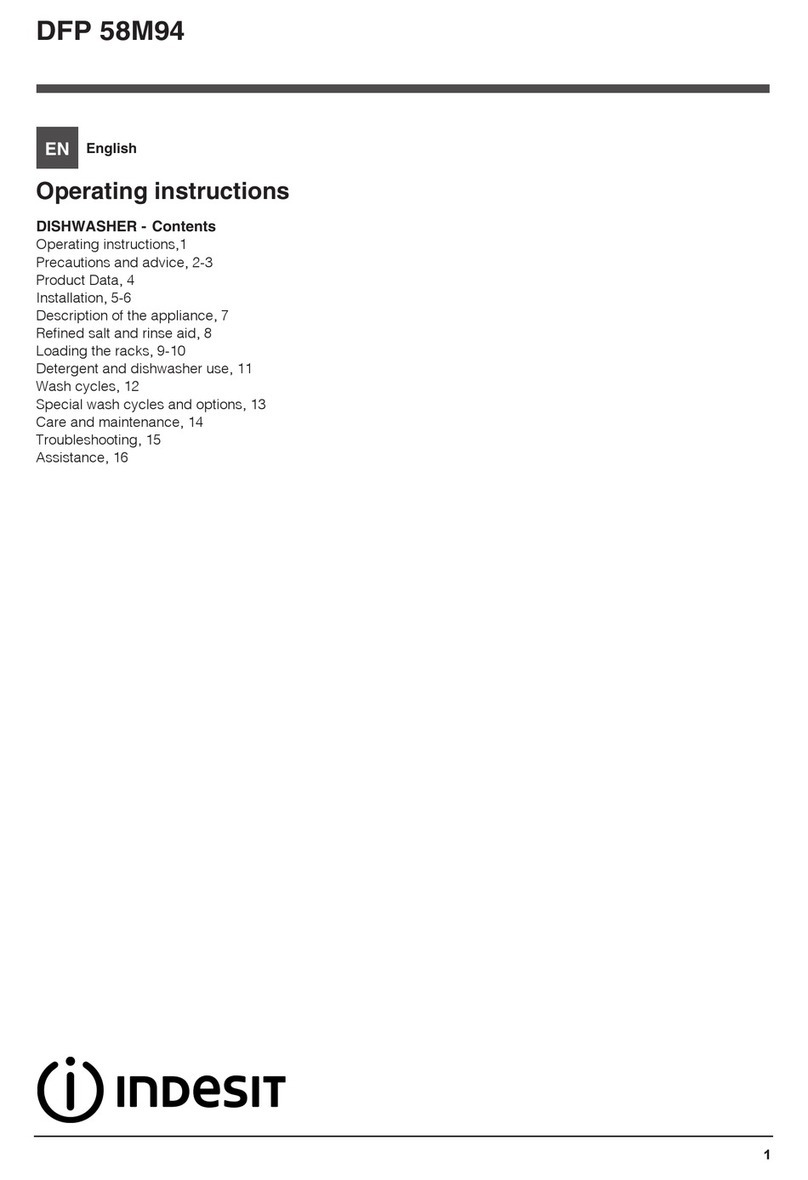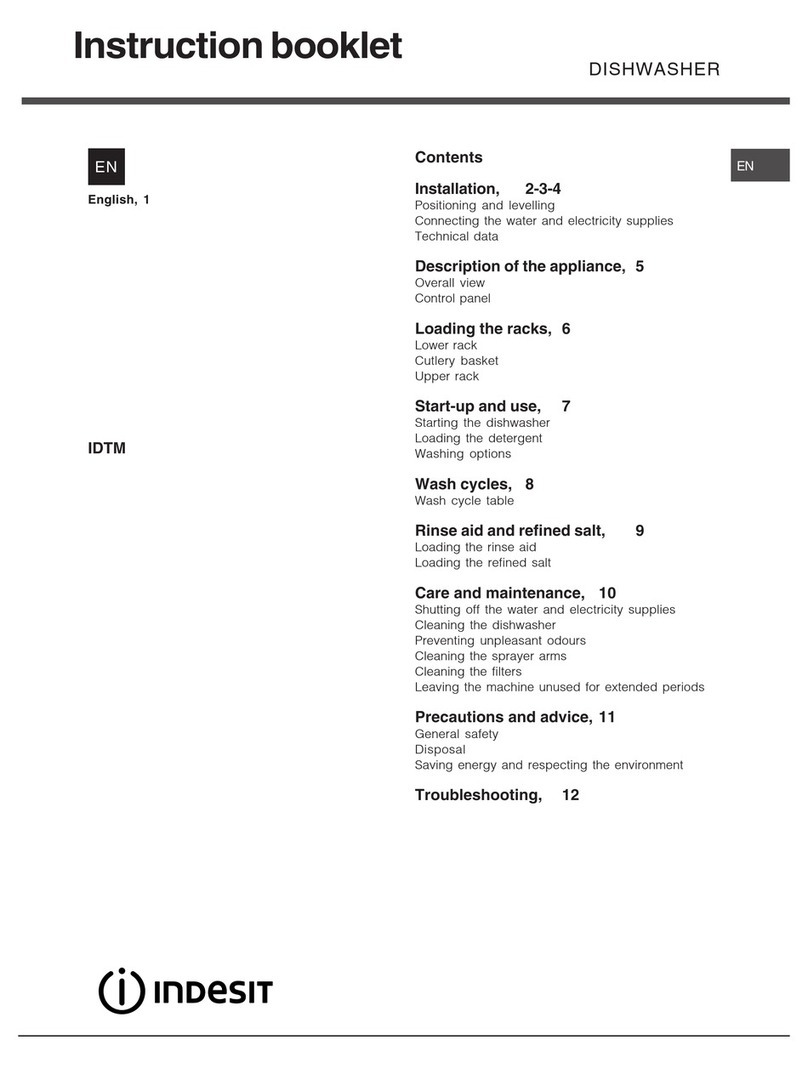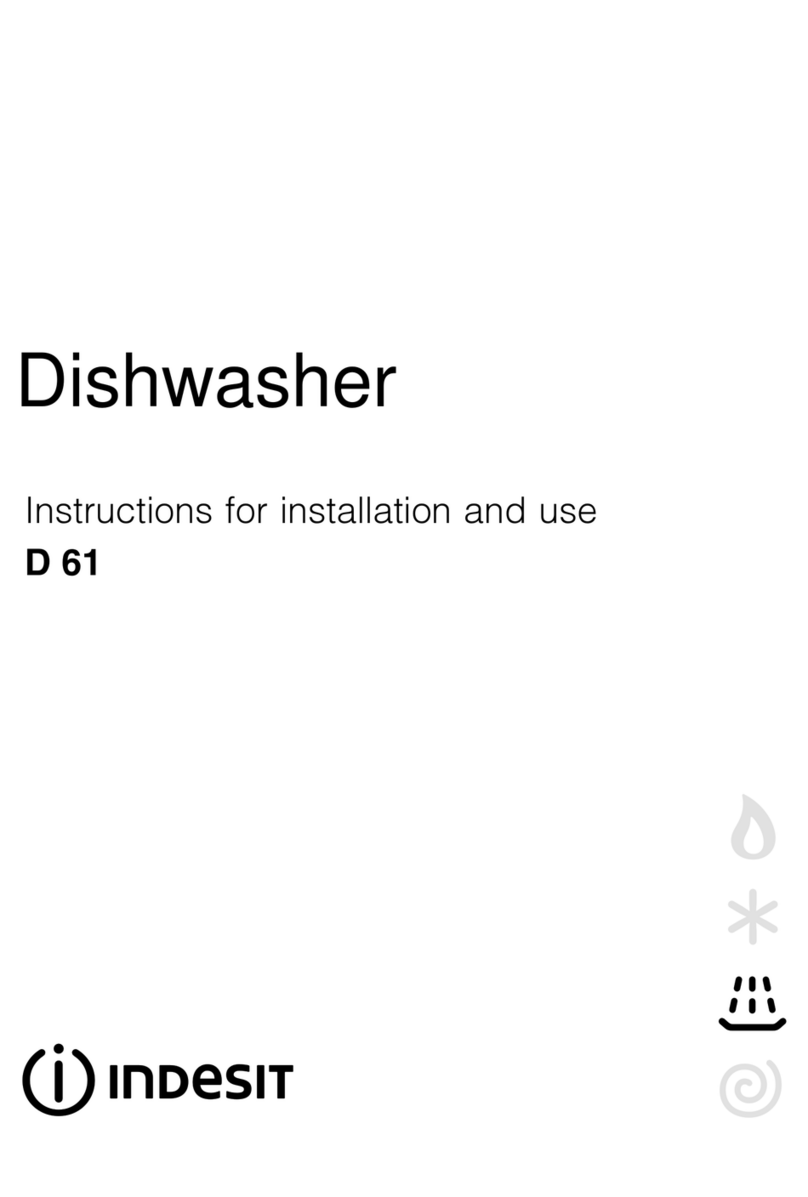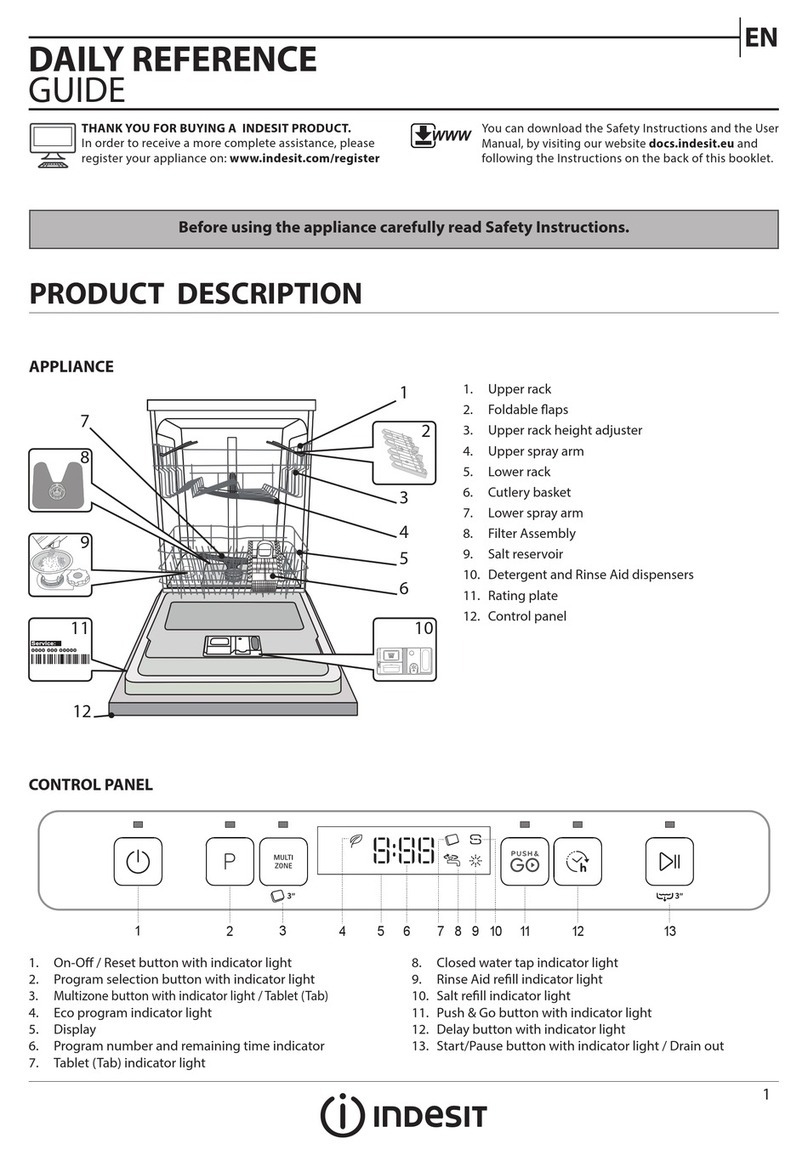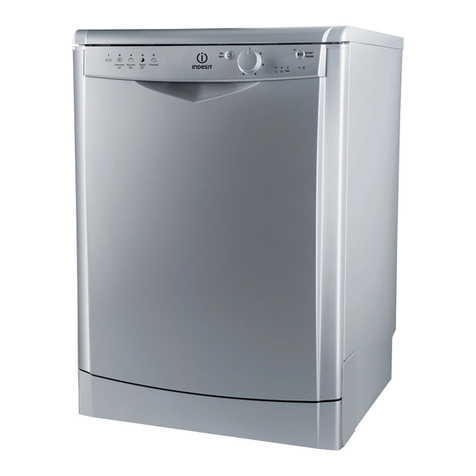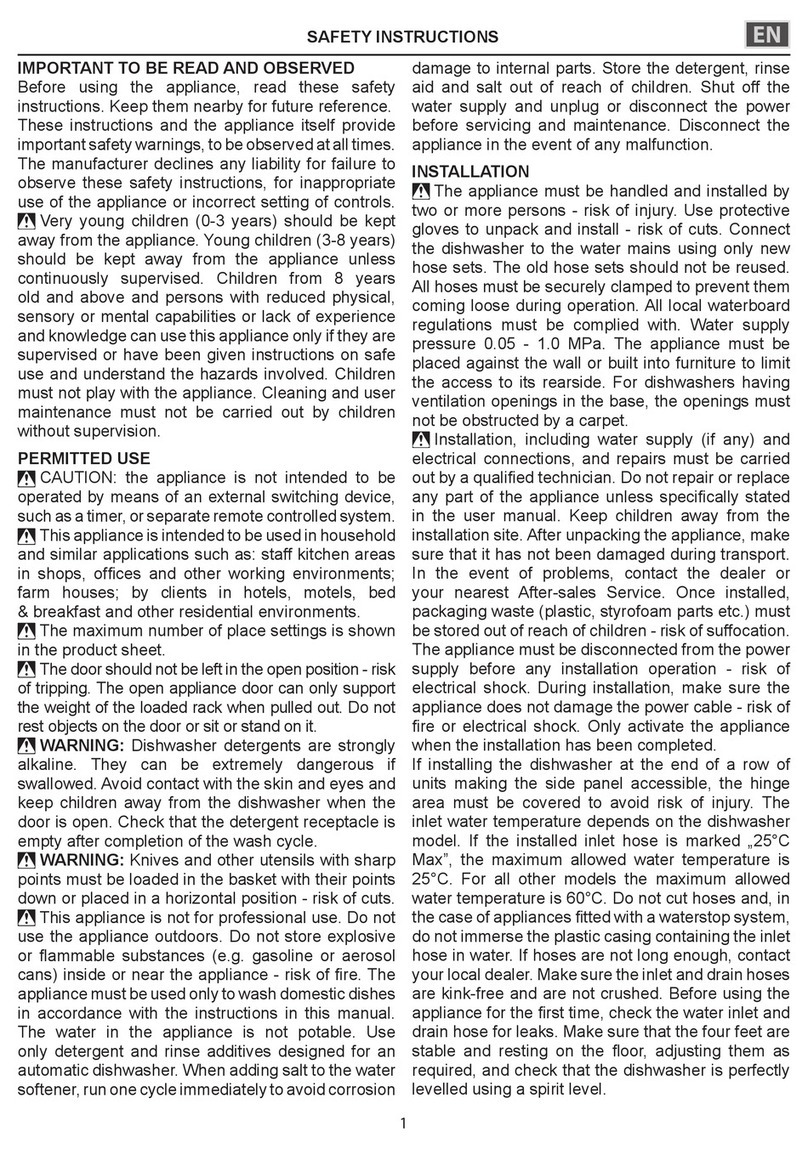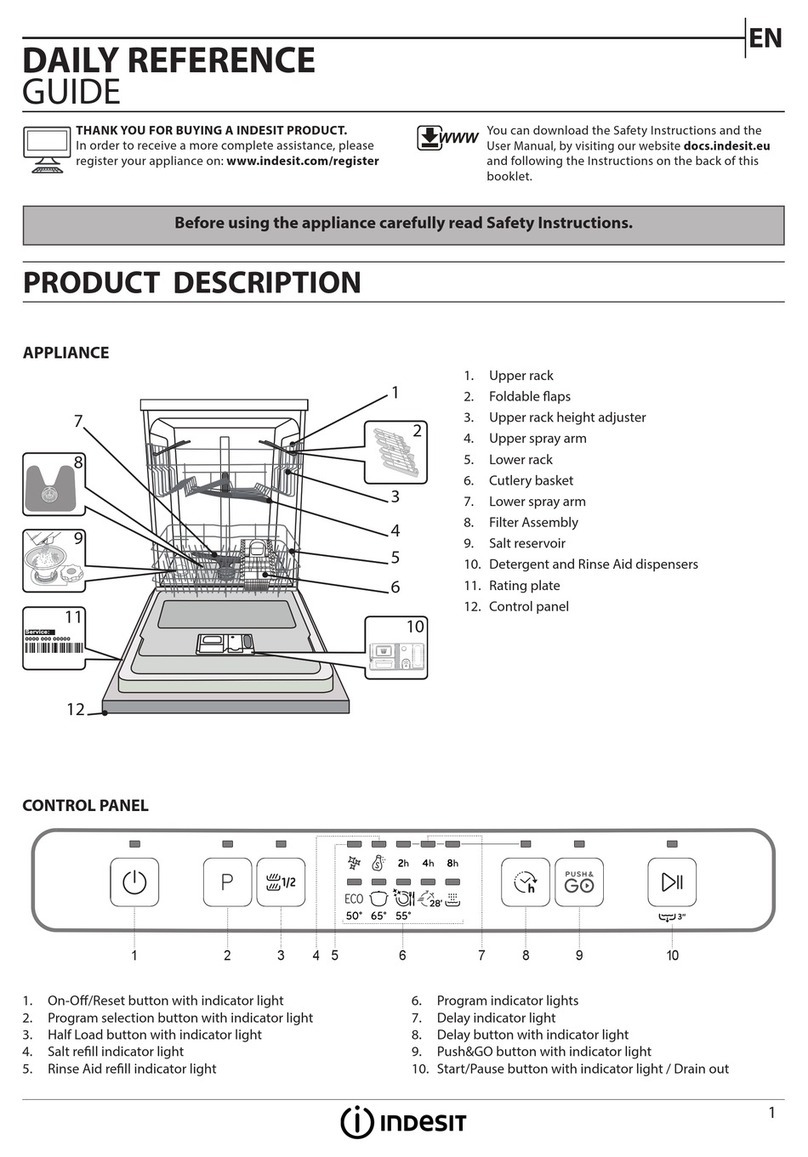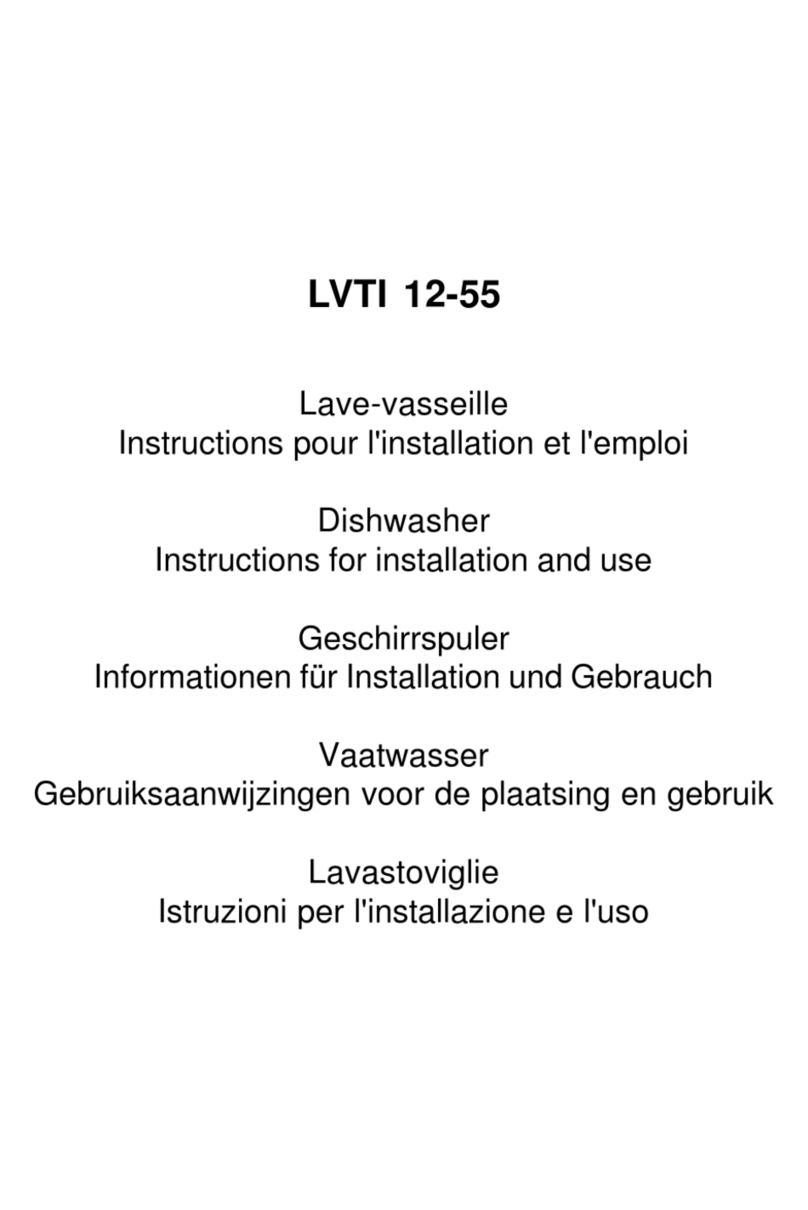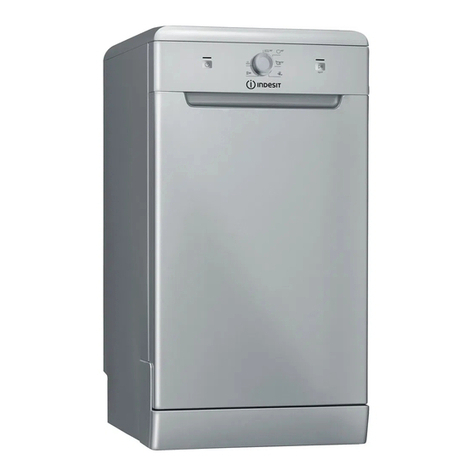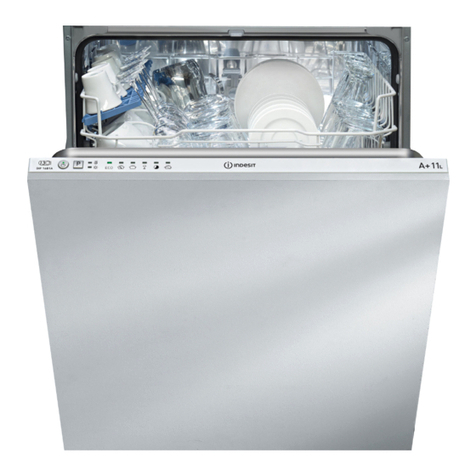EN
9
Rinseaid andrefined salt
Only use products which have been specifically
designed for dishwashers.
Do not use table salt or industrial salt, or washing
up liquid.
Follow the instructions given on the packaging.
If using a multi-functional product it is not necessary to add
rinseaid;however,we recommend thatyouadd salt, especially
if you live in an area where the water is hard or very hard.
Followthe instructions givenon the packaging.
If you do not add salt or rinse aid, the LOW
SALT*and LOW RINSE AID*indicator lights remain
lit.
Measuring out the rinse aid
Rinse aid makes it easier for the crockery to dry, as water runs
offsurfaces morereadily andtherefore doesnot leave streaksor
marks.
The rinse aid dispenser should be filled:
•When the LOW RINSE AID*indicator light onthe control
panelis illuminated; 1. Open the dispenser by turning
the lid (G) in an anticlockwise
direction.
2.Pourin therinseaid, makingsure
it does not overflow from the
dispenser. If this happens, clean
the spill immediately with a dry
cloth.
3. Screw the lid back on.
NEVER pour the rinse aid directly into the appliance tub.
Adjusting the amount of rinse aid
If you are not completely satisfied with the drying results, you
may adjust the quantity of rinse aid used. Use a screwdriver to
turnthe dosage adjuster (F) toone ofthe 6 pre-setpositions (the
default position is set to 4):
• If there are streaks on the crockery, set the adjustment device
to a lower number (1-3).
•If dropsofwater remainon thecrockery orifthere arelimescale
markspresent afterthe cyclehas finished, set the adjusterto a
higher number (4-6).
Setting the water hardness
Every dishwasher is equipped with a water softener which, by
usingrefined salt designedespecially forthis type ofappliance,
supplieswater without limescale which is then usedto wash the
crockery.
Thisdishwasher offers a setting which helps toreduce pollution
andoptimiseswashingperformance inaccordancewiththe water
hardness level in your area. This information can be obtained
fromthe organisationwhich supplies yourhousehold withwater.
-Open the doorand switch onthe machine by pressing theON/
OFFbutton.
- Press the P button and hold for approximately 5 seconds; two
short beeps will sound and the indicator light corresponding to
the set degree of hardness will flash slowly on the control panel
(the water softening system is set to number 3).
E.g. Hardness level 1 (1st cycle indicator light flashing)
Hardnesslevel 2 (1st cycleindicator lightON, 2nd cycle indicator
lightflashing)
Hardnesslevel 3 (1stand 2nd cycleindicator lights ON,3rd cycle
indicatorlight flashing etc)up to maximum5 levels.
- Press the P button repeatedly until the desired hardness level
has been reached (1-2-3-4-5*
see Water hardness table
).
- To exit the function, wait approximately few seconds or press
another option*button, or switch off the machine using the ON/
OFF button.
Even if using multi-functional tablets, the salt dispenser should
stillbe filled.
(°dH = hardness measured in German degrees - °f = hardness
measuredin French degrees- mmol/l = millimoles per litre)
Measuring out the refined salt
Inorder to achievethe bestpossible results usinga wash cycle,
makesurethatthedispenser isneverempty.Refinedsalt removes
limescalefrom thewater, thusavoiding theformation ofdeposits
on crockery.
Thesalt dispenser is locatedin the lowerpart of the dishwasher
(
see Description
)and should befilled:
• Whenthe green float*cannotbe seenby simply lookingat the
cap of the salt dispenser.
• When the LOW SALT*indicator light on the control panel is
illuminated; 1. Remove the lower rack and unscrew the
containercap (anticlockwise).
2. The first time you do this: fill the water tank
right up to its edge.
3. Position the funnel*(
see figure)
and fill the
saltcontainer rightup toits edge(this shouldhold approximately
1 kg); it is not unusual for a little water to leak out.
4. Remove the funnel*and wipe any salt residue away from the
opening;rinse thecap underrunning waterand thenscrew iton,
the head facing downwards so as to let the water flow out of the
fourcracks which arearranged in astar shape onthe lowerpart
of the cap. (Salt cap with green float*)
It is advisable to perform this procedure every time you add
salt to the container.
Make sure the cap is screwed on tightly, so that no detergent
can get into the container during the wash cycle (this could
damage the water softener beyond repair).
When necessary, measure out the salt before a wash cycle
so that any saline solution which has leaked out of the salt
dispenser is removed.
*Onlyavailable in selectedmodels.
G
F
Water Hardness Table Average salt container
capacity duration**
Level °dH °fH mmol/l months
1 0 - 6 0 - 10 0 - 1 7 months
2 6 - 11 11 - 20 1,1 - 2 5 months
3 12 - 17 21 - 30 2,1 - 3 3 months
4 17 - 34 31 - 60 3,1 - 6 2 months
5*
34 - 50
61 - 90
6,1 - 9
2/3 weeks
For values between 0°f and 10°f, we do not recommend the
use of salt.* this setting may cause a slight increase in the
duration of the cycles. **for 1 wash cycle per day.
